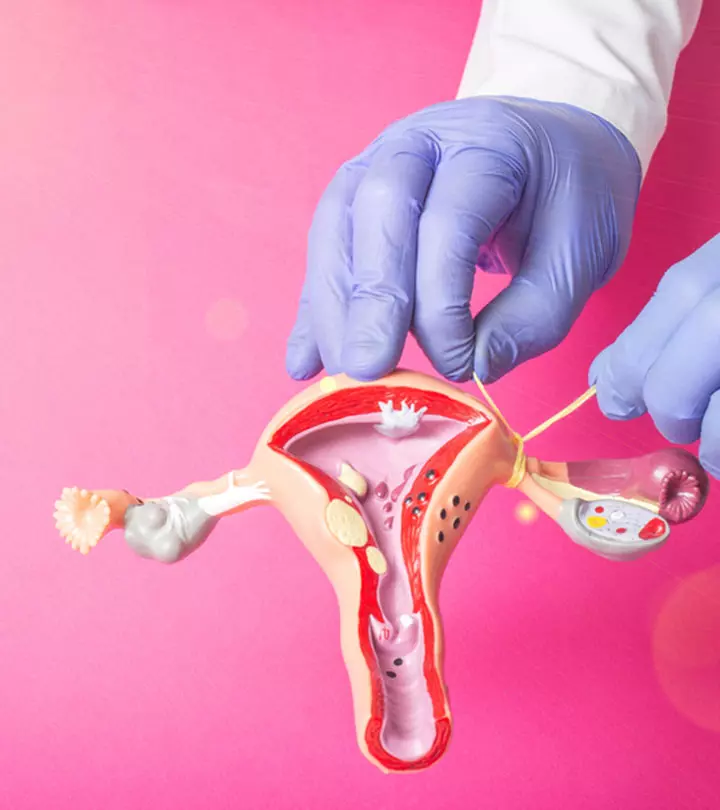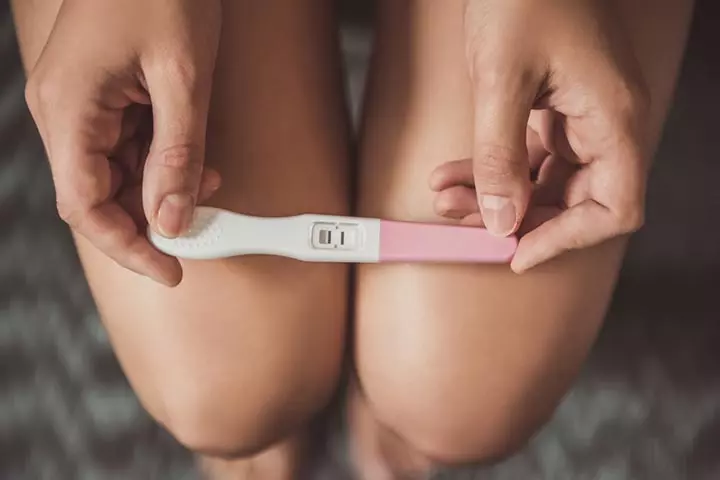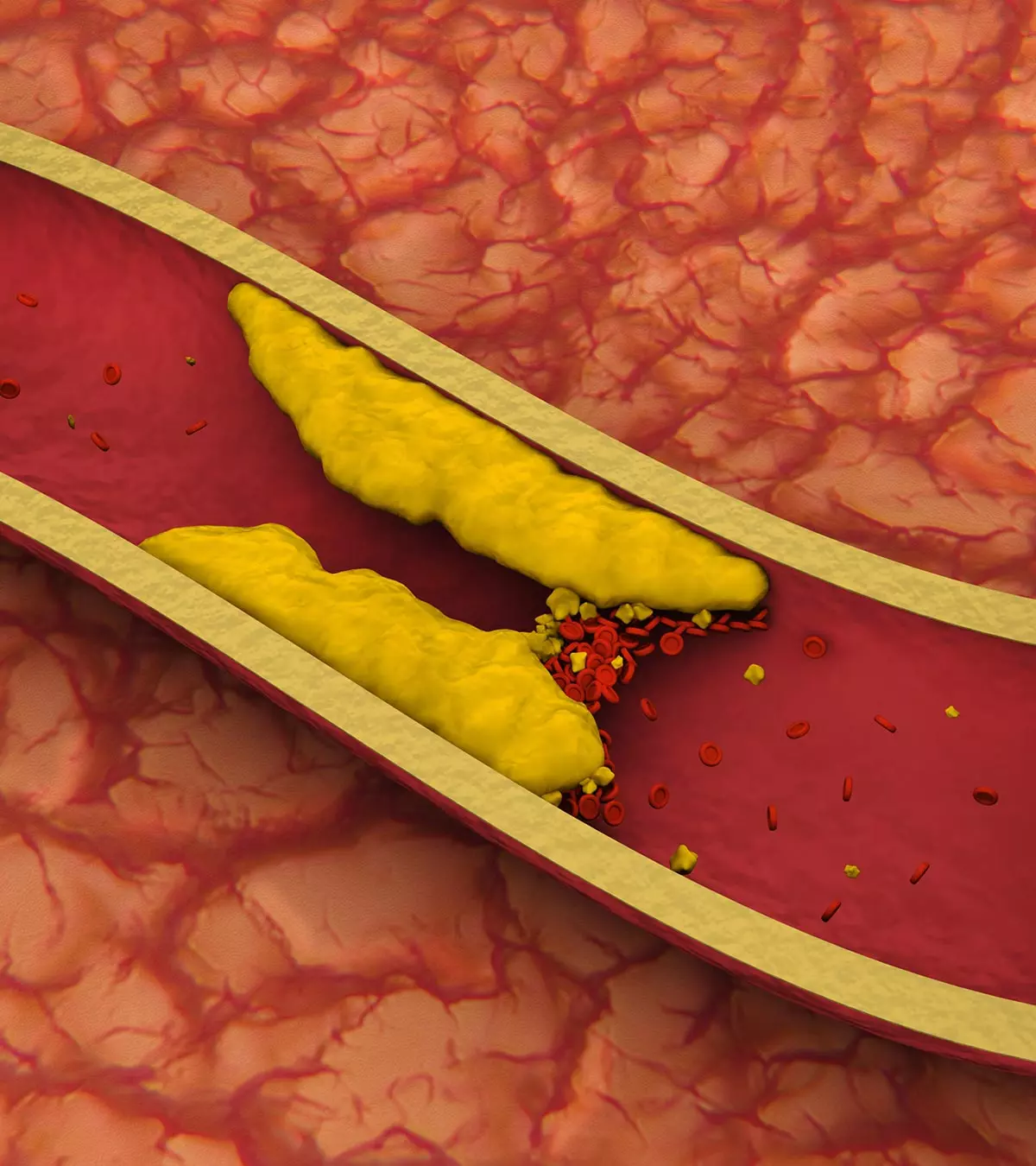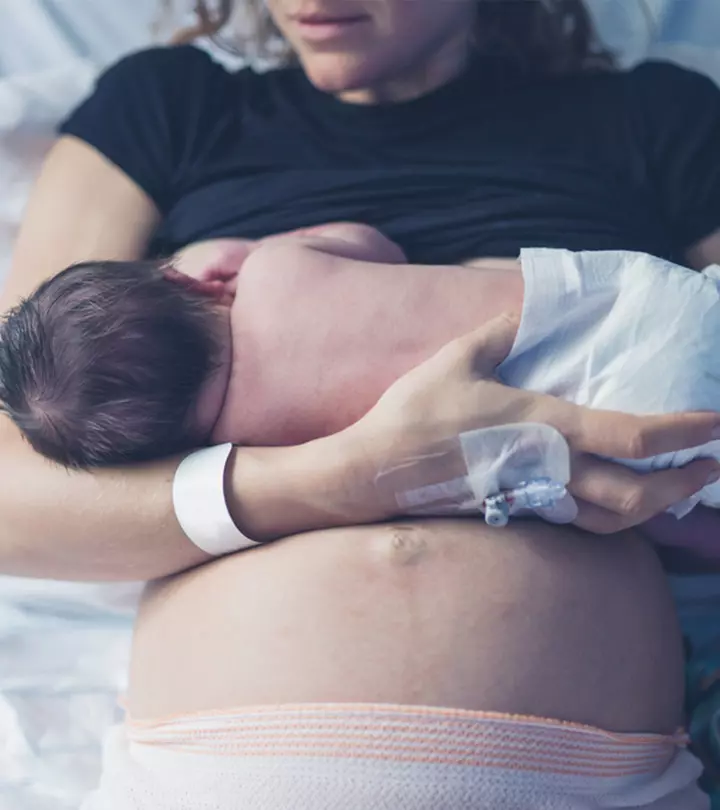
Image: Shutterstock
Tubal ligation is a combination of two words, where the term ‘tubal’ means the ‘fallopian tubes’ consisting of the eggs, and ligation refers to ‘binding up.’ Thus, this procedure involves tying up the fallopian tubes so that the eggs cannot enter the uterus for fertilization (1). While considered permanent, the procedure can sometimes fail due to surgical issues and individual anatomy. Thus, pregnancy after tubal ligation may occur under scarce circumstances. This post will tell you about tubal ligation, including the risk factors and chances of pregnancy post-procedure.

Key Pointers
- Tubal ligation is a permanent form of contraception that may rarely fail and result in pregnancy.
- The likelihood of conception depends on various factors, including age and the procedure followed.
- Ectopic pregnancy is a severe side effect of tubal ligation that can be harmful to the mother.
- Women who become pregnant after tubal ligation should seek medical attention immediately to avoid undesirable consequences.
What Are The Chances Of Pregnancy After Tubal Ligation?
During the surgical procedure, the fallopian tube is cut and then tied off, which leaves very little chance for a future pregnancy. However, like any other birth control method, tubal ligation is not 100% effective. Pregnancy after tubal ligation is possible if (2):
- The tubes regrow together, making way for the egg’s release into the uterus, where they get fertilized by the sperm if any.
- The surgery was done improperly.
- The woman is pregnant at the time of the surgery.
To lower the chances of natural pregnancy, women usually get a tubal ligation done immediately after the delivery or the first menstrual cycle.
If all fails and you still get pregnant, you will experience symptoms similar to that of a healthy pregnancy.
Signs And Symptoms Of Pregnancy After Tubal Ligation

If you had a tubal ligation, then check for the following signs and symptoms associated with pregnancy.
- Missed period
- Nausea
- Breast tenderness
- Dizziness
- Pain in the lower abdomen
The chances of pregnancy after tubal ligation are minimal. However, it may happen if the procedure fails in any way.
How Common Is Pregnancy After Tubal Ligation?
According to the University of Pittsburgh Medical Center, about 5 in 1000 women get pregnant after one year and 13 in 1000 after five years following this surgical procedure (2). The failure rate of tubal ligation was estimated to be 1.85% in 10 years.
It was also found about one-third of the pregnancies resulted in ectopic (pregnancy taking place inside the fallopian tube instead of the uterus) following a tubal ligation (3). It is believed that pregnancy will generally occur in the first two years post tubal sterilization (4).
Note that the chances of the pregnancy being ectopic are higher after the procedure. Keep reading to know about that and other risks of pregnancy after tubal ligation.
Risks Of Pregnancy After Tubal Ligation
Here are some conditions that raise the risks of pregnancy after tubal litigation:
- Post-Tubal Ligation Syndrome (PTLS): In rare cases, tubal ligation can affect blood flow to the fallopian tubes and ovaries, potentially putting pressure on the surrounding nerves and causing intrapelvic adhesions. These adhesions can lead to uncomfortable or painful symptoms in the months or years following tubal ligation. PTLS may also result in missed periods and symptoms similar to menopause, requiring proper medical diagnosis and treatment. Depending on the severity of the condition, the doctor may suggest medications or tubal ligation reversal to relieve the symptoms (16)(17).
Rebekah, a mother and a blogger, shares her story of how she suffered through the symptoms of PTLS after the c-section delivery of her fourth child. She says, “The recovery after Zeb was rough, shortly after the surgery the constant headaches started… I started having crazy night sweats, hot flashes, cold flashes, insomnia, severe lymph pain under my arms and the stabbing pain in my lower abdomen pretty much immediately and constantly, it was not getting better each day as it had with the first three births. My period returned six weeks after having a five week preemie and was heavier than anything I had ever experienced, and when I went to my six week post op I mentioned it all to the nurse as she was checking me in and questioned her about my tubal ligation having something to do with it. She leaned in and told me that she had hers tied and no one warned her beforehand what it could do to your body, she had never been the same (i).”
- Ectopic pregnancy
Ectopic pregnancy is the major risk associated with tubal ligation, even though the chances of pregnancy itself are rare. Ectopic pregnancy is one of the major causes of mortality and morbidity occurring in early pregnancy.

Knowing the warning signs and risks can help you seek timely help, mitigate the risks of ectopic pregnancies, and receive appropriate care. If you have had a tubal ligation, get checked for ectopic pregnancy if you experience amenorrhoeaiAbsence of menstrual periods. or lower abdominal pain (4). A study including 10,658 women found that the risk of ectopic pregnancy was about 7.3 per 1000 sterilization procedures done within ten years.
If an ectopic pregnancy is diagnosed, you need to see the doctor as it could be life-threatening. Whether to manage medically or surgically will be decided by your clinician depending upon the size, presence of cardiac activity, chances of rupture and your condition at presentation. (5).
What Are The Symptoms Of Ectopic Pregnancy?

Ectopic pregnancy symptoms are similar to those of normal pregnancy and include missed menstrual periods, breast tenderness, nausea, vomiting, frequent urination, and stomach upset (6).
Other symptoms include (7):
- Lower back pain
- Mild pain in the uterine cavity, pelvis or abdomen
- Abnormal cramps with vaginal bleeding
- Mild cramping to one side of the pelvis
- Low blood pressure
If you experience abnormal bleeding and severe pelvic pain, consult an obstetrician-gynecologist immediately. As the ectopic pregnancy progresses, the risk of fallopian tube rupture increases. You may also experience more severe symptoms including:
- Sudden and severe pain in the pelvis or abdomen
- Fainting, dizziness, and weakness
- Shoulder pain
Fallopian tube rupture is associated with severe internal bleeding, which could be life-threatening. So if you experience any of the symptoms mentioned above, visit your doctor immediately.
 Point to consider
Point to considerUsually, women with certain conditions are more susceptible to ectopic pregnancy.
Who Is At The Risk Of Ectopic Pregnancy?
Ectopic pregnancy can occur in women who (6):
- Have had an ectopic pregnancy previously
- Had a Fallopian tube surgery
- Had a previous pelvic or abdominal surgery
- Have STI (Sexually Transmitted Infection)
- Having endometriosisiA condition where tissues similar to the uterine lining (endometrium) grow outside of the uterus.
- With PID (Pelvic inflammatory disease)
- Have any infertility problems
- Are taking ovulation-stimulating medications that affect hormone levels
Some other factors include (7):

- Age above 35 years
- Cigarette smoking
- History of infertility
- Use of IVF (in vitro fertilization) or any other assisted reproductive technology
Tubal ligation has a good rate of success, but it has failed to prevent pregnancy in some cases.
What Are The Reasons For Tubal Ligation Failure?
Reasons for the failure of tubal ligation (8):
- Improper surgical procedure
- Recanalization of the fallopian tube
- Tuboperitoneal fistulaiAn abnormal passage between the uterus and peritoneal cavity
- MinilaparotomyiAn abdominal surgical approach to ligate the fallopian tubes through an abdominal incision less than five centimeters in diameter. (minilap)
Sterilization-failure rates after tubal ligation:
| Years | % of failure |
|---|---|
| 15.71 | |
| 1-5 | 57.14 |
| 5-10 | 21.43 |
| >10 | 5.71 |
Pregnancy after a tubal ligation needn’t just be an accident. You can also choose to get pregnant by going for the tubal ligation reversal procedure.
What Are The Options For Pregnancy Post Tubal Ligation?

Tubal Ligation Reversal
Getting pregnant post tubal ligation is possible through either tubal recanalization or ART (assisted reproductive technique). The tubal recanalization is a surgical procedure that involves re-attaching the cut or blocked ends of the fallopian tube, also known as tuboplasty. However, the success rate of the reversal procedure solely depends on the following (9):
- The method used for tubal ligation. Reversal is more likely in procedures using clips and rings rather than the Electrocauteryi method.
- If the time span between the tubal ligation and the reversal surgery is less, then the success rate for the reversal procedure is more.
- If the tubes are less damaged, then the reversal surgery is more likely to be successful.
Success Of Tubal Ligation Reversal
The success rate for tubal ligation reversal is 70-80% based on the method used for the sterilization and the extent of damage to the fallopian tube. Also, women who have undergone this procedure have a moderate risk of embryo implantation in the fallopian tube (ectopic pregnancy).
Pregnancy After Tubal Ligation Reversal
The pregnancy rate with a successful tubal ligation reversal method is around 75% over two years, with half of the pregnancies occurring in the first six months post tubal ligation (10).
A positive pregnancy following tubal ligation removal may require critical monitoring as it may carry the risk of being an ectopic pregnancy. The healthcare provider may monitor your hormones through blood and urine tests and also take a hysterosalpingogramiA x-ray test where the fallopian tubes and uterine cavity is filled with a special dye to diagnose fertility problems to ensure your fallopian tube is open. Your gynecologist may provide you with the right kind of supplements to prevent complications and address any symptoms you may have (11).
Frequently Asked Questions
1. How can you get pregnant without reversing tubal ligation?
Lately, the surgical reversal procedure has been replaced by the IVF method owing to its increasing success rates. So, women who wish to get pregnant are counseled for getting IVF done instead of the reversal surgery (12).
2. What are the complications of tubal ligation?
Like any surgery, tubal ligation is also associated with complications such as bleeding, reaction to anesthesia, infection, and injury to organs like the bladder, uterus, ovaries, and blood vessels (13).
3. Will tubal ligation decrease the sexual desire in women?
No. As there will no longer be any fear of getting pregnant, a woman can have an active sexual life.
4. How effective is tubal ligation with clips?
Tubal ligation with clip procedures has a high success rate, including in women over 35 years old at the time of the procedure. Studies show that the success rate within 10 years of the procedure is above 99 percent (14).
5. What is the failure rate of tubal ligation with a C-section?
Tubal ligation is a surgical procedure that involves cutting or blocking the fallopian tubes to prevent pregnancy. The failure rate is low when this procedure is performed during a lower-segment cesarean section (also known as a C-section). Research shows that only 3.57% of cases result in pregnancy. This means that in most cases, tubal ligation performed during a lower-segment C-section is effective in preventing pregnancy (8).
6. Where does the egg go after tubal ligation?
After surgery, the ovaries continue to produce eggs and have ovarian reserve, but the fallopian tubes cannot transport the eggs. Similarly, sperm cannot travel through the tubes to reach the eggs. As a result, fertilization is not possible, leading to the absorption of eggs by the body (15).
Tubal ligation can help prevent pregnancy in most cases. However, this surgical birth control method isn’t 100 percent effective. Tubes regrowing together and improper surgery are scenarios when pregnancy after tubal ligation can be possible. If at all you get pregnant after tubal ligation, you will experience the same symptoms as a healthy pregnancy. However, it could raise the risk of ectopic pregnancy. So, if you don’t want babies, you can consider discussing tubal ligation with your doctor before deciding. Later in life, if you wish to expand your family, you can speak to your healthcare provider about the reversal of tubal ligation.
Infographic: Risk Factors For Ectopic Pregnancy After Tubal Ligation?
Ectopic pregnancy is an abnormal pregnancy, and it is an uncommon phenomenon following a tubal ligation procedure. However, a few specific factors increase the likelihood of ectopic pregnancy in women following tubal ligation. Scroll through this infographic to learn the possible risk factors of ectopic pregnancy after tubal ligation.
Some thing wrong with infographic shortcode. please verify shortcode syntax
Illustration: Symptoms Of Pregnancy After Tubal Ligation And Risks Involved

Image: Dall·E/MomJunction Design Team
In extremely rare cases, pregnancy is possible even after tubal ligation. How? This video will explain how it happens, ways to ascertain pregnancy after sterilization, and what to do in such a scenario.
Personal Experience: Source
MomJunction articles include first-hand experiences to provide you with better insights through real-life narratives. Here are the sources of personal accounts referenced in this article.
i. Post Tubal Ligation Sydrome :: My Story.https://rebekahgough.blogspot.com/2015/03/post-tubal-ligation-sydrome-my-story.html
References
1. Tubal Ligation; Stanford Children’s Health (2019)
2. Tubal ligation and tubal implants; UPMC (2019)
3. Chances of Pregnancy After Tubal Ligation; Sutter Health (2018)
4. Akaba GO, et al.; Ruptured Ectopic Pregnancy after Bilateral Tubal Ligation: A Case Report; Journal of Women’s Health Care (2013)
5. Treatment; NHS
6. Ectopic Pregnancy; KidsHealth
7. Ectopic Pregnancy; American College of Obstetricians and Gynecologists (2018)
8. Female sterilization failure: Review over a decade and its clinicopathological correlation; International Journal of Applied and Basic Medical Research (2014)
9. Tubal Ligation Reversal; NewYork-Presbyterian Hospital
10. Tubal Ligation Reversal; UAB Medicine (2019)
11. Tubal Ligation Reversal; Cleveland Clinic
12. Tubal Ligation Reversal; NIH
13. Public Education Pamphlets; The Society of Obstetricians and Gynaecologists of Canada (SOGC)
14. Long-Term Failure Rates of Interval Filshie Clips As a Method of Permanent Contraception; NCBI
15. Tubal Ligation; California Family PACT
17. Tubal Ligation; Cleveland Clinic
Community Experiences
Join the conversation and become a part of our nurturing community! Share your stories, experiences, and insights to connect with fellow parents.
Read full bio of Dr. Asmita Kaundal
Read full bio of shreeja pillai
Read full bio of Rebecca Malachi
Read full bio of Reshmi Das

 Be watchful
Be watchful














